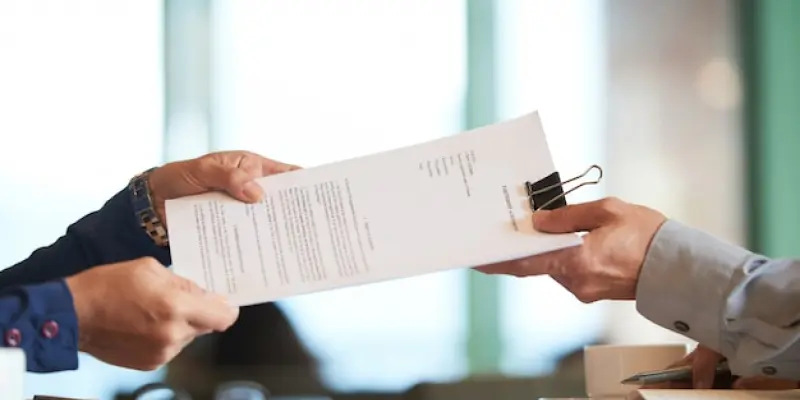In an era where compliance with immigration regulations is essential for businesses, U.S. Citizenship and Immigration Services (USCIS) has initiated substantial reforms to Form I-9 to streamline employment verification processes. With these updates taking effect from April 2025, the overhaul impacts not only the form itself but also associated systems such as E-Verify and its advanced variant, E-Verify+. These changes aim to help employers and employees navigate the complexities of employment eligibility in the United States more efficiently and effectively. By adopting these revisions, companies can ensure they remain aligned with the latest legal standards, minimizing ambiguities and administrative hurdles that often accompany outdated procedural guidelines.
Key Form I-9 Revisions
The January 2025 edition of Form I-9 introduces significant modifications intended to align with current legal requirements and improve user comprehension. One major change is the rewording of the fourth checkbox in Section 1, which now reads, “An alien authorized to work.” This adjustment reflects efforts to clarify status designations, meeting evolving language standards in U.S. immigration law. Additionally, subtle but crucial amendments have been made to List B documents’ descriptions. While specific details of these changes are less detailed, they underscore a continued commitment to precise language that mirrors statutory requirements and facilitates a smoother verification process.
Another critical aspect for employers is the management of older Form I-9 versions dated August 2024 and August 2023, which can still be used until their expiration. Maintaining consistency between these forms and entries on verification systems like E-Verify is crucial. Any discrepancies in versions or status selections could lead to compliance pitfalls. For instance, if an employee’s Form I-9 marks them as “An alien authorized to work,” this must match their status on E-Verify and E-Verify+ platforms. Such alignment is vital for preventing confusion and averting potential penalties that may arise from misalignment in documentation.
Integration with E-Verify Systems
An integral part of USCIS’s enhancements includes streamlined integration with electronic verification systems, particularly E-Verify and its advanced counterpart, E-Verify NextGen. This integration ensures that the most recent edition and expiration information of Form I-9 are seamlessly incorporated into digital workflows. By effectively synchronizing physical document processes with digital verification systems, employers can achieve greater accuracy and efficiency. This move signifies a broader trend in employment verification, where technological advancements are leveraged to enhance the coherence between physical and electronic documentation, reducing error and facilitating smoother compliance checks.
Participants in E-Verify and E-Verify+ are encouraged to embrace these technological shifts, highlighting the importance of utilizing updated systems that automatically integrate the latest legal changes. By doing so, businesses not only ensure adherence to compliance protocols but also streamline their employment verification practices, significantly minimizing the time and effort typically associated with manual form updates. This forward-thinking approach underscores a broader industry trend toward employing technology to manage compliance requirements more effectively, allowing employers to focus on strategic operational goals without being bogged down by administrative intricacies.
Compliance and Accuracy Focus
A recurring theme in USCIS’s changes to Form I-9 is a heightened emphasis on compliance and precision in employment eligibility documentation. By simplifying and standardizing language across the form and its instructions, USCIS aims to make the document more user-friendly and accessible, reducing the likelihood of misunderstandings and misinterpretations. This initiative is part of a larger strategy to bring U.S. immigration practices in line with contemporary legal frameworks, ensuring clarity and consistency throughout the documentation process.
Employers are advised to closely monitor these updates and incorporate them into their onboarding processes to avoid noncompliance risks. By adhering to the refined standards, businesses can navigate the complexities of employment eligibility with greater ease. A key takeaway from this development is the necessity for companies to engage with these changes actively, ensuring that their operations comply with the updated forms and instructions. The shift towards clearer statutory language and improved document descriptions aids in achieving this goal, providing a solid foundation for reliable and compliant employment verification.
Broader Trends in Employment Verification
The revisions to Form I-9 and updates to associated electronic systems reflect federal agencies’ efforts to modernize employment verification processes. These changes signal recognition of the need to adapt to a rapidly evolving workforce environment characterized by technological innovations and increased mobility. By refining verification procedures, USCIS and DHS demonstrate a commitment to enhancing the accuracy and legal compliance of documentation practices, which in turn supports economic and workforce stability.
The significance of these reforms lies in their collective goal to create an intuitive and legally sound verification process that aligns with the needs of modern employers and employees. Precision in documentation and coherent integration between form updates and digital systems are essential elements in achieving this aim. Employers who proactively engage with these reforms are better positioned to avoid discrepancies and potential legal challenges while fostering a transparent and efficient employment verification process that benefits all stakeholders involved.
Advice to Employers
In today’s business world, maintaining compliance with immigration rules is crucial, and U.S. Citizenship and Immigration Services (USCIS) is implementing notable revisions to Form I-9, aimed at simplifying employment verification processes. Effective April 2025, these changes encompass systems like E-Verify and its enhanced version, E-Verify+. These modifications are designed to assist employers and employees in better managing the complexities surrounding employment eligibility in the United States. By integrating these updates, companies can ensure they align with current legal standards, reducing potential legal uncertainties and administrative difficulties often encountered with outdated methods. This initiative not only aids in maintaining lawful operations but also equips businesses with more precise tools to handle employment compliance matters, fostering an environment conducive to smoother onboarding and workforce management practices.

